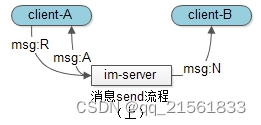本文介绍: 需求背景是主表上有业务流程,子表上有一个选项集字段,选项集字段包含所有的业务流程阶段,在更新子表的选项集时主表的业务流程阶段也需要同步跳转。然后把这个plugin注册在子表上的create 和 update 即可,这里看具体的业务需求实现。由于创建和更新查询不同,所以可以写两个plugin 也可以写在一个中使用message去控制。在实际操作中总会遇到使用业务流程的需求,那么如何使用plugin实现跳转阶段的功能呢。模型驱动应用使用插件实现跳转业务流程阶段跳转功能。
微软 Power Apps model drven app 模型驱动应用使用Plugin插件实现业务流程跳转阶段功能

模型驱动应用使用插件实现跳转业务流程阶段跳转功能
在实际操作中总会遇到使用业务流程的需求,那么如何使用plugin实现跳转阶段的功能呢

需求背景是主表上有业务流程,子表上有一个选项集字段,选项集字段包含所有的业务流程阶段,在更新子表的选项集时主表的业务流程阶段也需要同步跳转。
由于创建和更新查询不同,所以可以写两个plugin 也可以写在一个中使用message去控制
//创建时执行
if (Context.MessageName=="Create")
{
//查询刚刚触发创建的业务流程(业务流程实体)
string strXml = "<fetch version='1.0' output-format='xml-platform' mapping='logical' distinct='false'>";
strXml += "<entity name='new_start'>";
strXml += "<attribute name='businessprocessflowinstanceid' />";
strXml += "<attribute name='bpf_name' />";
strXml += "<attribute name='createdon' />";
strXml += "<attribute name='bpf_new_salesopportunityid' />";
strXml += "<attribute name='activestageid' />";
strXml += "<attribute name='statecode' />";
strXml += "<attribute name='statuscode' />";
strXml += "<attribute name='createdby' />";
strXml += "<attribute name='processid' />";
strXml += "<order attribute='bpf_name' descending='false' />";
strXml += "<filter type='and'>";
strXml += "<condition attribute='businessprocessflowinstanceid' operator='eq' value='" + target.Id + "' />";
strXml += "</filter>";
strXml += "</entity>";
strXml += "</fetch>";
EntityCollection start = Service.RetrieveMultiple(new FetchExpression(strXml));
if (start.Entities.Count > 0)
{
Entity Entitytag = Service.Retrieve("new_salesopportunity", start.Entities[0].GetAttributeValue<EntityReference>("bpf_new_salesopportunityid").Id, new ColumnSet("new_phase", "new_businesstype"));
//如果包含阶段
if (Entitytag.Contains("new_phase"))
{
//查询需要跳转的阶段(流程阶段值实体)
string StageFetch = "<fetch version='1.0' output-format='xml-platform' mapping='logical' distinct='false'>";
StageFetch += "<entity name='processstage'>";
StageFetch += "<attribute name='processstageid' />";
StageFetch += "<attribute name='processid' />";
StageFetch += "<attribute name='stagename' />";
StageFetch += "<order attribute='stagename' descending='false' />";
StageFetch += "<filter type='and'>";
//这里是阶段id 也可以再查一次,这里不大严谨就直接放入了id
StageFetch += "<condition attribute='processid' operator='eq' value='{5674a97c-e2d7-4ae6-9dfa-15a8ad0fa340}' />";
//根据选项集的name搜索我们要跳转的阶段
StageFetch += "<condition attribute='stagename' operator='eq' value='" + Entitytag.GetAttributeValue<EntityReference>("new_phase").Name + "' />";
StageFetch += "</filter>";
StageFetch += "</entity>";
StageFetch += "</fetch>";
EntityCollection steges = Service.RetrieveMultiple(new FetchExpression(StageFetch));
if (steges.Entities.Count > 0)
{
//修改流程阶段
Entity getProcess = new Entity("new_start");
getProcess.Id = start.Entities[0].Id;
getProcess["activestageid"] = new EntityReference("processstage", steges.Entities[0].Id);
//更新流程阶段
Service.Update(getProcess);
}
}
}
}
下面是update时执行,我把它拆开了
else if (Context.MessageName == "Update")
{
Entity Entitytag = Service.Retrieve("new_salesopportunity", target.Id, new ColumnSet("new_phase", "new_businesstype"));
if (target.Contains("new_phase"))
{
//查询需要跳转的阶段(update时候直接查询流程阶段实体即可)
string StageFetch = "<fetch version='1.0' output-format='xml-platform' mapping='logical' distinct='false'>";
StageFetch += "<entity name='processstage'>";
StageFetch += "<attribute name='processstageid' />";
StageFetch += "<attribute name='processid' />";
StageFetch += "<attribute name='stagename' />";
StageFetch += "<order attribute='stagename' descending='false' />";
StageFetch += "<filter type='and'>";
StageFetch += "<condition attribute='processid' operator='eq' value='{5674a97c-e2d7-4ae6-9dfa-15a8ad0fa340}' />";
StageFetch += "<condition attribute='stagename' operator='eq' value='" + Entitytag.GetAttributeValue<EntityReference>("new_phase").Name + "' />";
StageFetch += "</filter>";
StageFetch += "</entity>";
StageFetch += "</fetch>";
EntityCollection steges = Service.RetrieveMultiple(new FetchExpression(StageFetch));
if (steges.Entities.Count > 0)
{
//查询触发创建的业务流程
string strXml = "<fetch version='1.0' output-format='xml-platform' mapping='logical' distinct='false'>";
strXml += "<entity name='new_start'>";
strXml += "<attribute name='businessprocessflowinstanceid' />";
strXml += "<attribute name='bpf_name' />";
strXml += "<attribute name='createdon' />";
strXml += "<attribute name='bpf_new_salesopportunityid' />";
strXml += "<attribute name='activestageid' />";
strXml += "<attribute name='statecode' />";
strXml += "<attribute name='statuscode' />";
strXml += "<attribute name='createdby' />";
strXml += "<attribute name='processid' />";
strXml += "<order attribute='bpf_name' descending='false' />";
strXml += "<filter type='and'>";
strXml += "<condition attribute='bpf_new_salesopportunityid' operator='eq' value='" + target.Id + "' />";
strXml += "</filter>";
strXml += "</entity>";
strXml += "</fetch>";
EntityCollection start = Service.RetrieveMultiple(new FetchExpression(strXml));
if (start.Entities.Count>0)
{
//修改流程阶段
Entity getProcess = new Entity("new_start");
getProcess.Id = start.Entities[0].Id;
getProcess["activestageid"] = new EntityReference("processstage", steges.Entities[0].Id);
//更新流程阶段
Service.Update(getProcess);
}
}
}
}
然后把这个plugin注册在子表上的create 和 update 即可,这里看具体的业务需求实现
当然如果觉得plugin麻烦也可以同理写一个前端的js来实现。

感谢大佬指正 小Monkey
如果你觉得有用的话,就留个赞吧!蟹蟹
原文地址:https://blog.csdn.net/Houoy/article/details/135693372
本文来自互联网用户投稿,该文观点仅代表作者本人,不代表本站立场。本站仅提供信息存储空间服务,不拥有所有权,不承担相关法律责任。
如若转载,请注明出处:http://www.7code.cn/show_60797.html
如若内容造成侵权/违法违规/事实不符,请联系代码007邮箱:suwngjj01@126.com进行投诉反馈,一经查实,立即删除!
主题授权提示:请在后台主题设置-主题授权-激活主题的正版授权,授权购买:RiTheme官网
声明:本站所有文章,如无特殊说明或标注,均为本站原创发布。任何个人或组织,在未征得本站同意时,禁止复制、盗用、采集、发布本站内容到任何网站、书籍等各类媒体平台。如若本站内容侵犯了原著者的合法权益,可联系我们进行处理。



